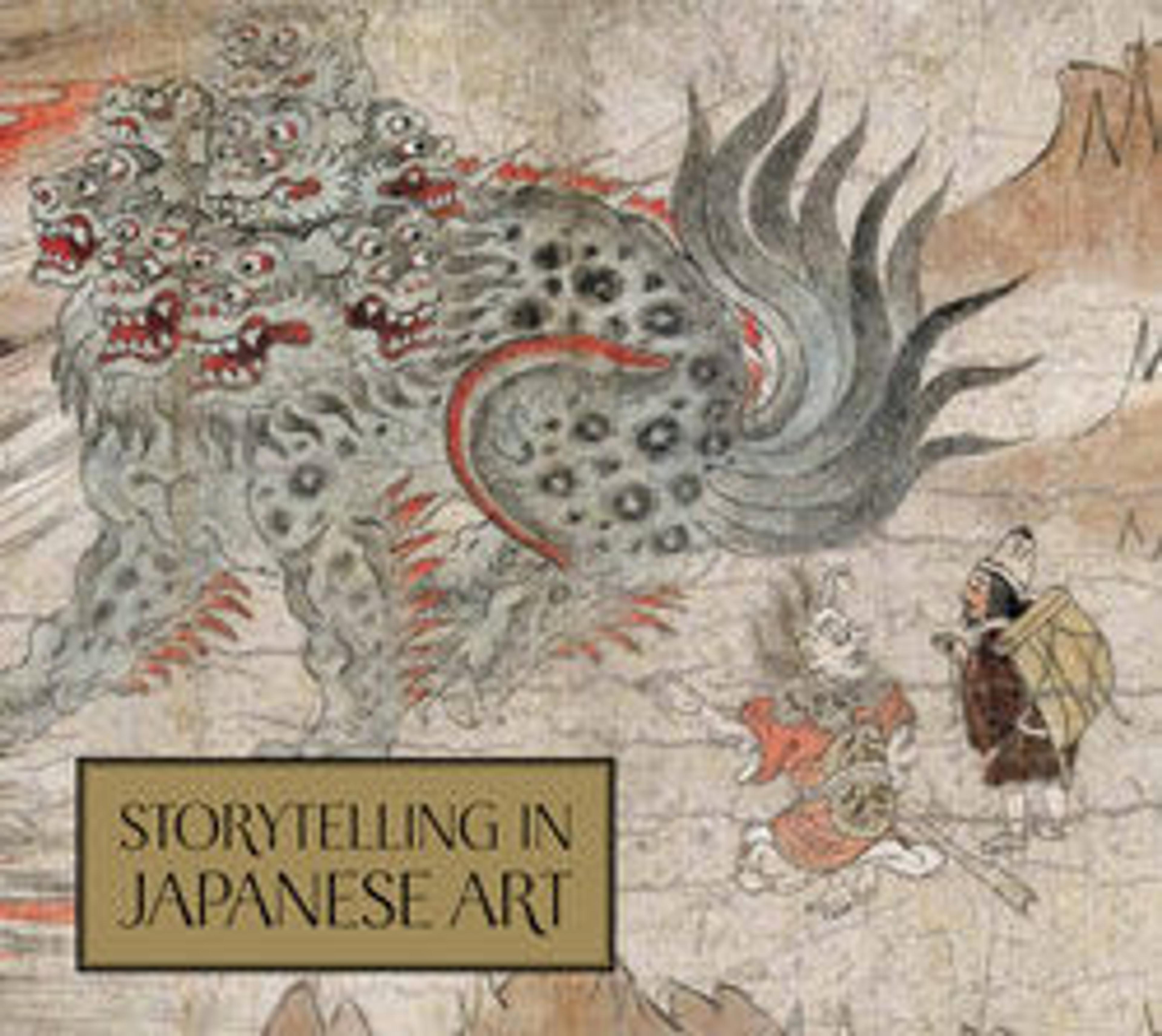Mandala of Kumano Shrine
Kumano mandalas represent the Kumano Shrine complex, one of the most sacred sites in Japan. The painting is divided into three sections. At center, Buddhas and bodhisattvas sit on the tiled floor of a temple. In the bottom register, Shinto deities appear against mountains that dip into the Pacific Ocean. The top register reflects the distinctive confluence of Shinto and Buddhism that took place in medieval Japan, depicting deities from both religious traditions standing side by side. At right is Nachi Waterfall, the largest waterfall in Japan, whose tutelary deity—the one-thousand-armed Kannon—is shown in shining gold. Standing against the tallest peak is the three-eyed, blue-bodied Zaō Gongen, the tutelary deity of yamabushi (mountain-dwelling practitioners of a sect known as Shugendō). The sect's legendary founder, En no Gyōja, can be seen seated in a nearby cave, flanked by his two servant-demons.
Artwork Details
- 熊野曼茶羅図
- Title: Mandala of Kumano Shrine
- Artist: Unidentified artist
- Period: Nanbokuchō period (1336–92)
- Date: early 14th century
- Culture: Japan
- Medium: Hanging scroll; ink, color, and gold on silk
- Dimensions: Image: 51 15/16 x 22 13/16 in. (131.9 x 57.9 cm)
Overall with mounting: 86 5/8 x 29 15/16 in. (220 x 76 cm)
Overall with knobs: 86 5/8 x 32 in. (220 x 81.3 cm) - Classification: Paintings
- Credit Line: Purchase, Gift of Dr. Mortimer D. Sackler, Theresa Sackler and Family, 2006
- Object Number: 2006.521
- Curatorial Department: Asian Art
More Artwork
Research Resources
The Met provides unparalleled resources for research and welcomes an international community of students and scholars. The Met's Open Access API is where creators and researchers can connect to the The Met collection. Open Access data and public domain images are available for unrestricted commercial and noncommercial use without permission or fee.
To request images under copyright and other restrictions, please use this Image Request form.
Feedback
We continue to research and examine historical and cultural context for objects in The Met collection. If you have comments or questions about this object record, please contact us using the form below. The Museum looks forward to receiving your comments.
